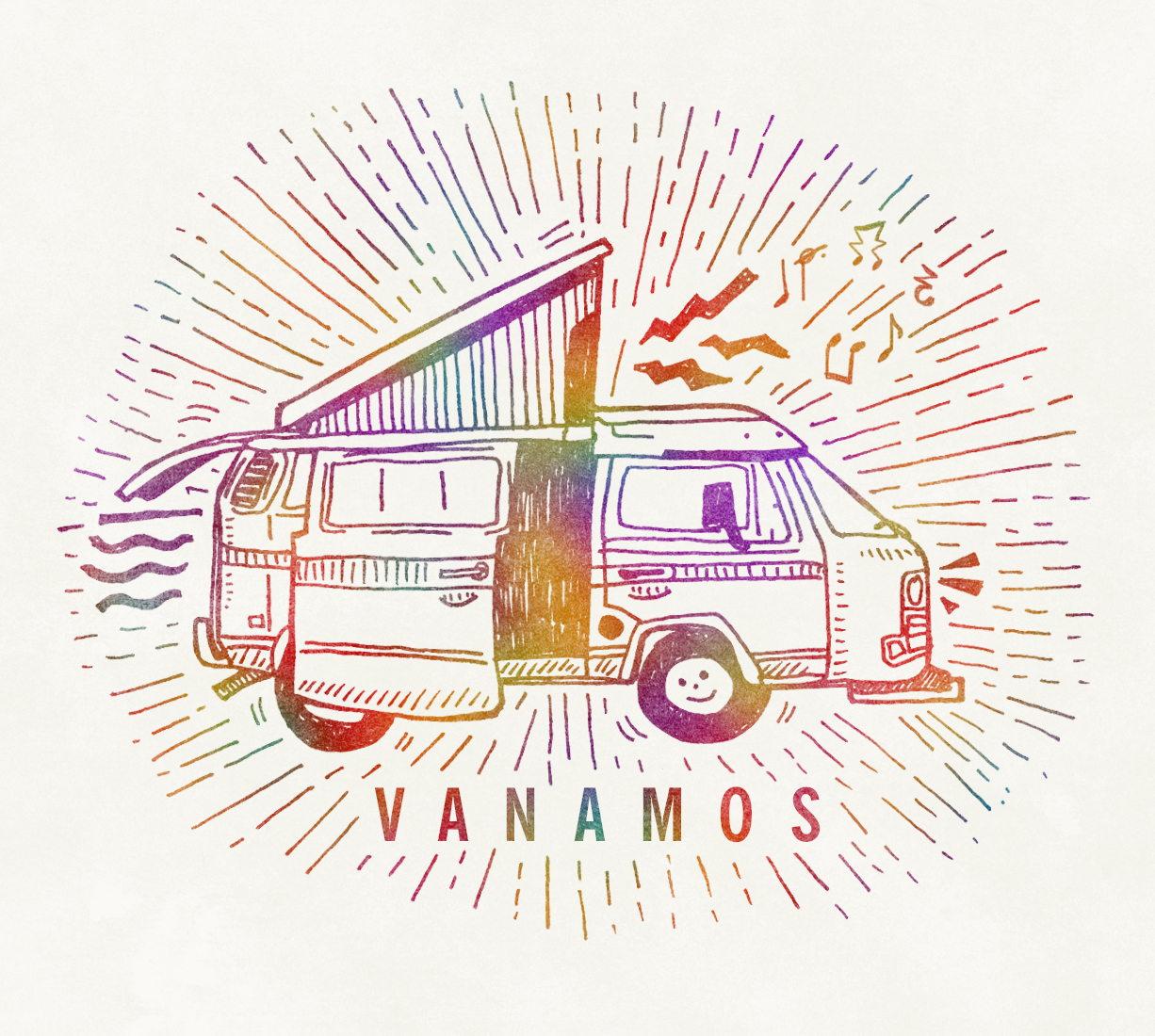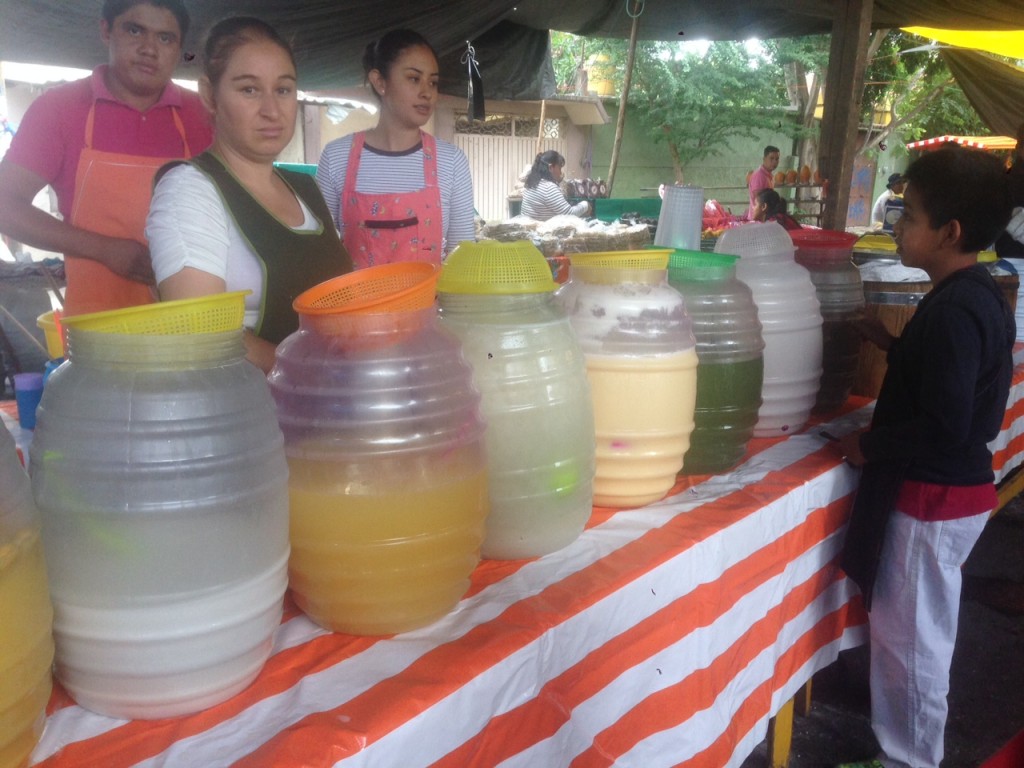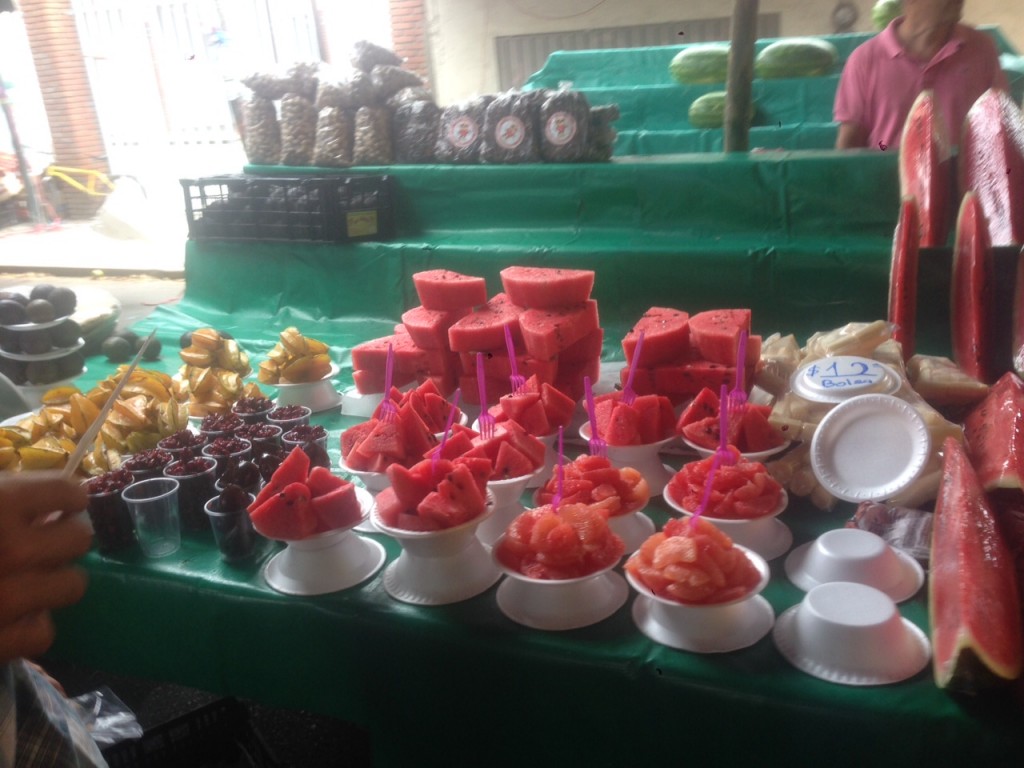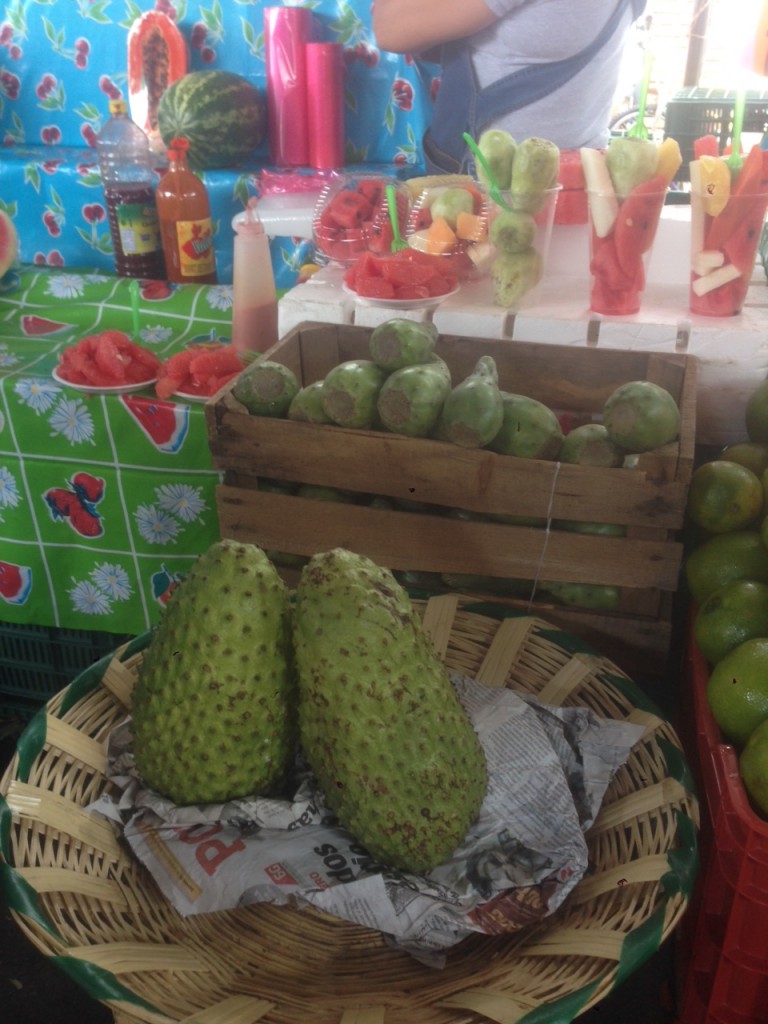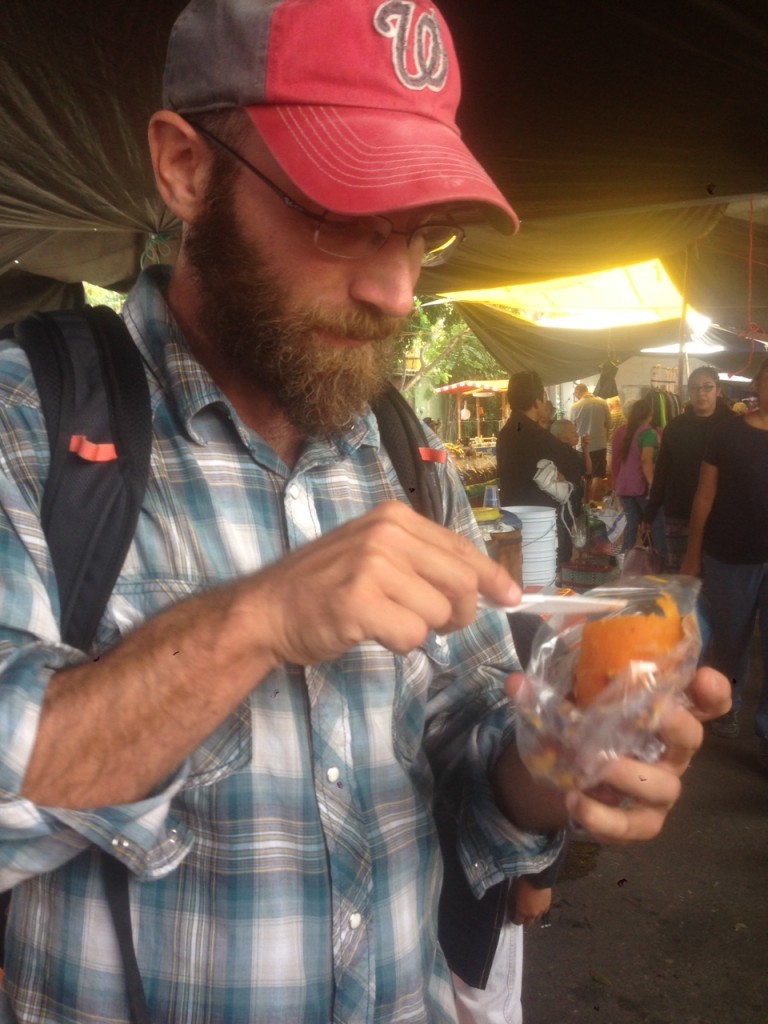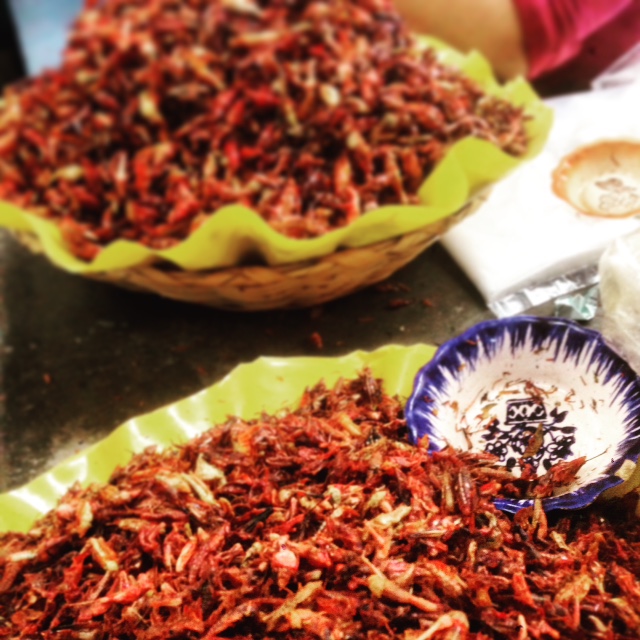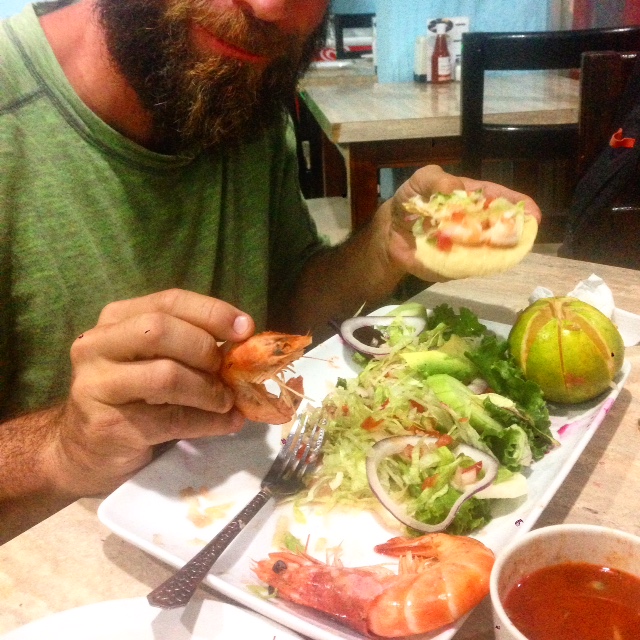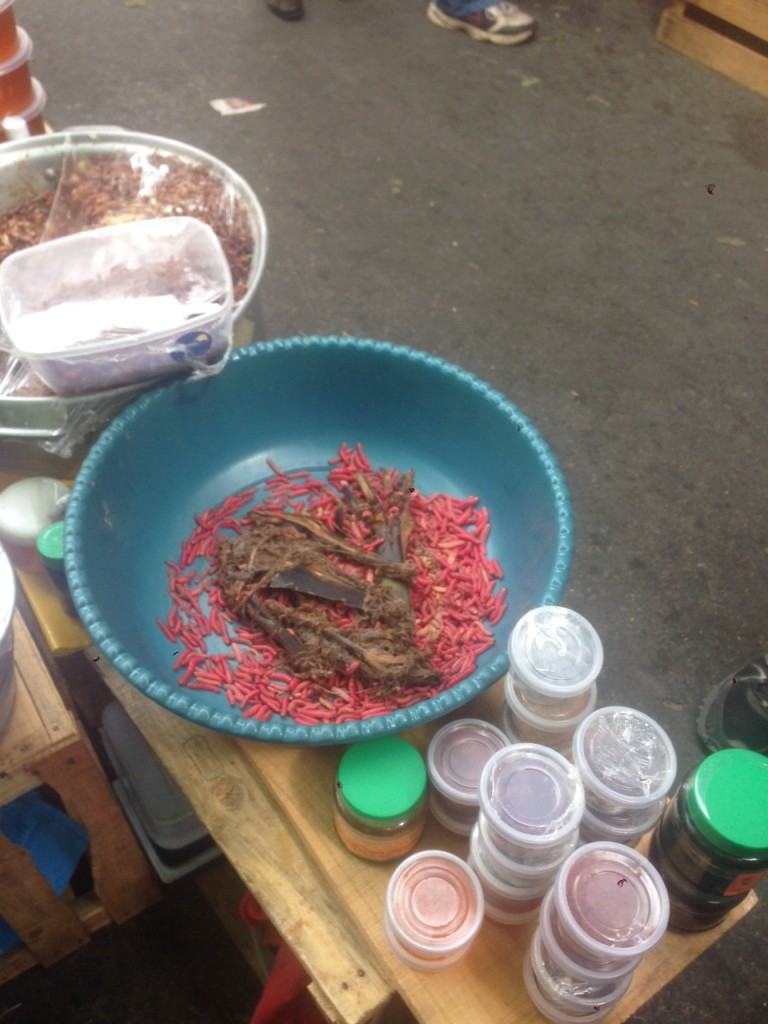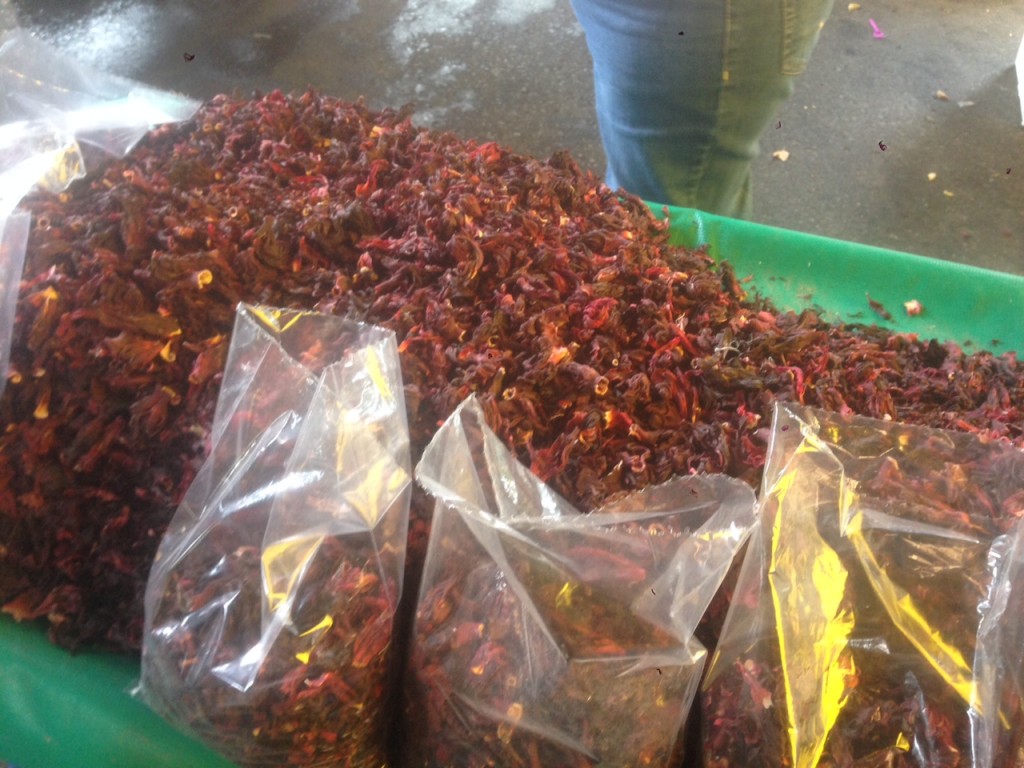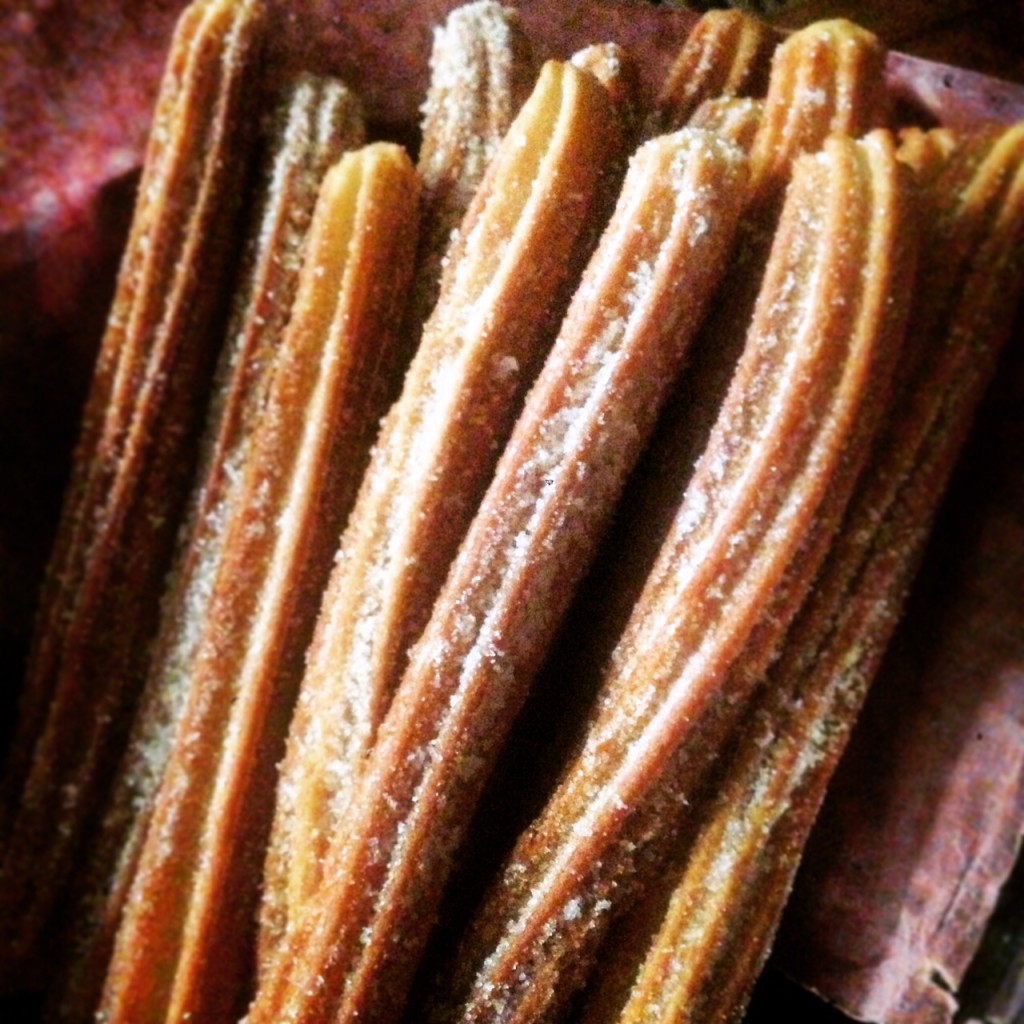I can probably count on one hand the number of times in my life that I have purchased a bottled juice like a Snapple or Nantucket Nectars in the United States. I’m just not a juice in a bottle guy. Here in Mexico, however, it’s a different story. In fact, getting juiced has become a daily ritual. At a juice stand in a market I can watch the vendor, usually an overweight, sweating, heavily-made up, motherly figure, press the oranges, carrots, apples, or whatever fruit or vegetable into the juicer and know I am getting something healthy, fresh, and cheap. My favorite is a beet and carrot juice served in an enormous glass goblet costing anywhere from 35 to 60 pesos. If we are just walking around town, we can get cold, pre-made (and usually sweetened) agua natural (fruit water) like orange, watermelon, or jamaica, from a cart. We’ve become particularly fond of jamaica, which is a tea made from the hibiscus flower. A five to ten peso serving of aqua natural from a cart will be ladled into a bag, stuck with a straw, tied off with a rubber band or a knot, and we are on our way.
Fruit is more abundant here than a steaming pile of dog shit, and one of the great joys in life, next to being warned just in time to watch your step, is discovering the fruteria that exists in every village and sells all manner of fruits and vegetables. The main fruteria may not always be right next door, but in most cases the store directly across the street from wherever we are staying will sell some type of fresh fruit like bananas, limes, avocados, apples, or papaya, for a few pesos. If we are in an area of the country that grows a particular type of fruit, that fruit will be sold at every store, sometimes alongside nothing else.
R remembers being at the airport in Hong Kong as a kid and eating mango after mango before getting on the plane because she loved mangoes so much and they weren’t available in the States. Times have changed and my philosophy on trying new fruit is that in this age of globalization and instant gratification, if it hasn’t been exported to the United States already, it’s probably not that good, or, even if it is good, it’s too much work to eat. Nevertheless, we’ve tried a few new things.
The guanabana (soursop in English) is a big green thing, slightly larger than a big cantaloupe, which could probably kill you if you fell on it in a certain way as its outer shell is spiny and hard. The flesh is tasty, but sort of mushy in an unappealing way – like you are sucking on the skin hanging from your grandmother’s tricep. We prefer it juiced or in ice cream to fresh.
A guayaba (guava) is a plum-sized, yellow skinned fruit that you eat like a peach, but each bite is filled with bb-sized seeds that make each bite not worth taking. We purchased a few guayaba early in the trip because that’s the kind of people we are and after driving around with them for a week or two, I ate the things whole just to get rid of them (they give off a sickly sweet smell as they get overripe), not bothering to spit out the seeds.
Most of our meals, if we aren’t cooking them ourselves, we take at roadside stands, out of someone’s garage or front room, or at comedors – a more permanent food stall in a market where you might sit at picnic tables and benches rather than on a plastic stool or on those ubiquitous white or green plastic patio chairs. Some people are hung up on cleanliness and that sort of thing, but as long as we can’t see flies dancing on the food before it gets put on our plate, we feel like the chances that we get sick and die from the meal are slim. Despite this lackadaisical attitude toward my health and well-being, however, I’ve still not managed to get up the courage to try foods derived from the head or other gross parts of an animal. There is a specialty taco in Oaxaca that involves the cow’s eyes that is never going to end up on my plate if I can help it. I was told earlier in the trip that barbacoa was a type of stew that included all parts of the cow’s head except the brain, but I was recently told that barbacoa is a style of cooking any type of meat, not just cow face, so whether barbacoa ends up in my stomach will be a game time decision.
Earlier in the trip we also saw a lot of places serving goat meat – cabrito – but not recently, so I thought it might be a northern Mexican specialty. It was finally on the menu again at the market we went to this past Saturday so I was able try it in a taco. It was chopped up just like beef and didn’t have a distinct taste. Mostly I just tasted the spicy sauce it was mixed with.
Oaxaca is known for its unique cuisine – most famously, I think, the mole, which is a chili and spice based sauce, sometimes including chocolate. Moles are generally served over meat or fish with rice and can be spicy, sweet, or some combination of the two. I’ve tried a mole colorado over chicken, which includes cinnamon and several varieties of chile, and liked its spicy flavor. The favorite thing that we’ve tried in Oaxaca is the tlayuda, which is a giant crispy tortilla topped with any assortment of things including string cheese, vegetables, flowers, and meat. I’ve had these folded into a type of sandwich, which I really liked, but mostly the tortilla is too crispy to fold so you break pieces off and enjoy it that way.
R and I don’t fret when the kids want to eat familiar foods like pizza and hamburgers despite being surrounded by all these other more appealing (to us) choices because it may help to make them feel more like we are at home. Though, we draw the line at Domino's. Grilled chicken is everywhere and it always smells awesome and everyone is happy when we stop to pick up a whole chicken that usually comes with two sides (spaghetti or rice), a salad, and grilled onions, for less than 100 pesos.
When we eat “Mexican”, Coconut will try different things, often off of my plate (she ate most of my pork empanada the other day), but has mainly stuck to beef or shrimp dishes with rice and beans. J’s Mexican culinary vocabulary starts and stops with bean quesadillas. We had these at a stand in Monterrey on one of our first days in country, and now he always asks for them. However, the texture and consistency of the beans varies at each place so it’s hit or miss whether he will actually eat them. I think his favorite meal is when I make him quesadillas at camp using refried beans from a can, leftover corn or flour tortillas that we’ve taken home from one of our previous meals, and some cheese. I can see this being one of his go-to meals when he is cooking for himself in college.
The other thing that everyone enjoys is dessert. It never takes long to find someone pushing an ice cream cart around with a nice selection of homemade ice creams like mango, lime (Coconut's and my favorite!), vanilla, guanabana, or chocolate. Oaxaca is also famous for chocolate. Someone told us that the pre-Hispanic peoples who lived in this area used cacao beans as money and that is was good for the economy because the beans could only be kept for a year or two before they rot, so no one person could hoard money but must spend it. Besides buying chocolate in its standard block form, we can buy some type of cold chocolate milk drink on the streets for 15 pesos. I’ve only had one of these drinks but it was fantastic and I’ve got to make a greater effort to drink more of these.
Shave ice is also everywhere and we’ve become regular users. A woman nearby the warehouse we are staying makes frozen juice pops and J wants to know every day whether he can go buy a tamarindo pop for five pesos. I’m not sure what the tamarindo fruit looks like because it’s another one of those fruits not good enough to export, but great to enjoy in a juice or frozen way.
There is a bicycle repair shop across the street from our place and while drinking mescal the other night with Antonio the mechanic, he revealed that he and his brother have a churro business. A churro is a fried strip of dough sprinkled with sugar, and Antonio rises at 3 a.m. each morning to help his brother sugar and package the freshly made churros, and then he delivers them around the city on his bike. He offered to bring us some of the hot churros but the deal was that he had to knock on our door right before he left on his rounds at 5 a.m. if we wanted them hot, which of course we did.
